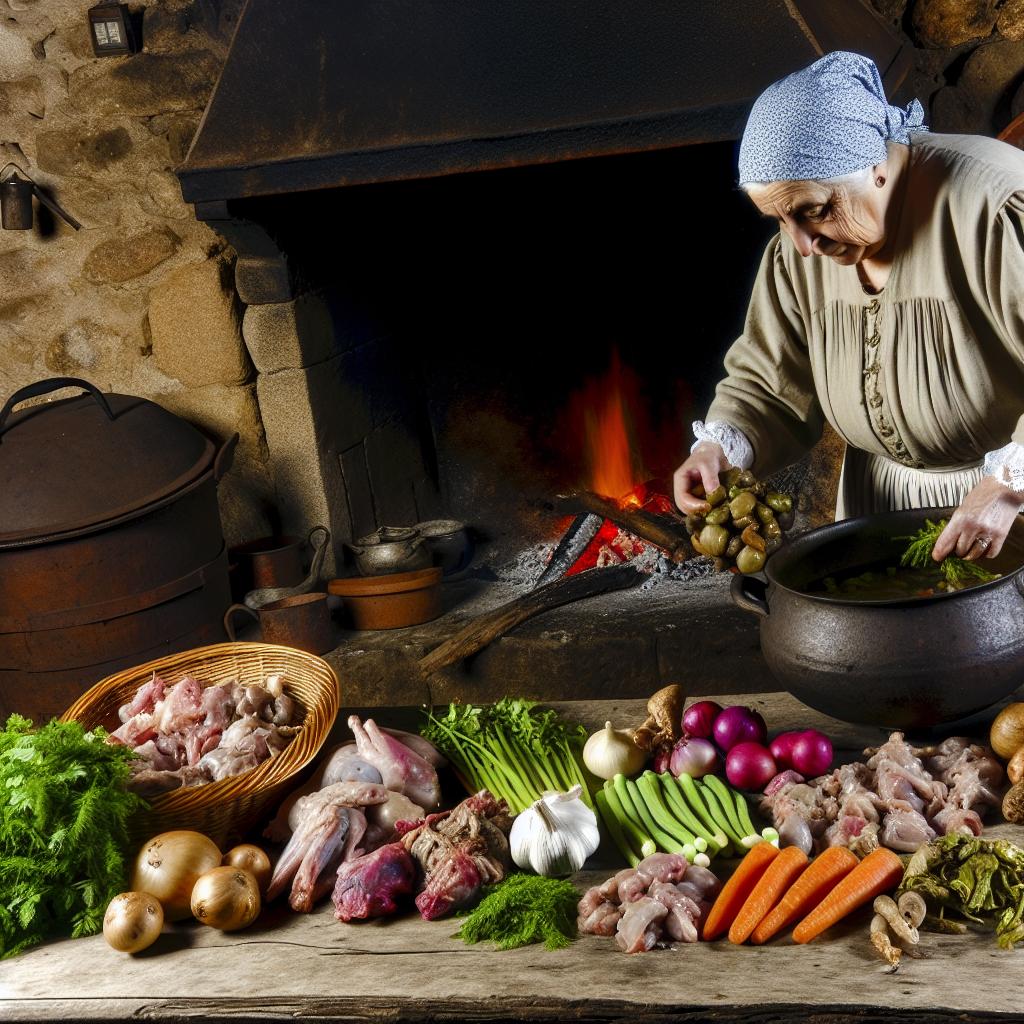
The traditional Catalan dish known as cap i pota has a long and storied history. It originates from the necessity of making the most of every part of an animal, a common practice in many cultures worldwide. The name cap i pota translates to “head and hoof,” alluding to the primary ingredients typically used in the stew. This dish is deeply embedded in Catalan culture and showcases the resourcefulness and culinary ingenuity of the region.
Dating back several centuries, cap i pota was initially developed out of frugality. In the past, households could not afford to waste any part of the slaughtered animal. This resulted in creative recipes that incorporated various parts of the animal to ensure nothing went unused. The stew was a practical solution, providing a substantial meal that could feed a family inexpensively.
Despite its humble beginnings, cap i pota became a staple in Catalan households due to its ability to stretch limited resources while offering rich flavors. This dish is a classic example of how necessity often shapes culinary practices. It highlights a time when communities relied heavily on locally sourced ingredients and inventive cooking methods to create satisfying meals.
Over time, the recipe for cap i pota has evolved, and various regions and families have put their own twist on the dish. Originally, the stew was made using beef head and feet, slow-cooked with vegetables and spices. Today’s versions sometimes include more accessible ingredients like pork or even seafood, yet they all strive to maintain the rich, hearty nature of the original dish.
This evolution of cap i pota reflects broader trends in culinary adaptations over time. As trade expanded and new ingredients became available, cooks adapted the recipe to include new flavors and textures. Despite these changes, the essence of the dish—a testament to resourcefulness and creativity—remains intact.
In modern Catalonia, cap i pota is a celebrated dish, often found in traditional Catalan restaurants and increasingly gaining appreciation in contemporary cuisine. Chefs may add ingredients such as chickpeas or rock-eels to adapt the recipe, but the essential character of the dish remains unchanged. It is frequently served with crusty bread or rice, providing a socially engaging meal typically enjoyed with family and friends.
The preparation of cap i pota today involves simmering the chosen meats with aromatic herbs and spices such as bay leaves, garlic, or paprika, which contribute to its deep, savory flavor. The addition of vegetables like onions or tomatoes not only enhances the taste but also provides a vibrant and nutritious balance to the stew.
Restaurants across Catalonia have embraced cap i pota as a representation of traditional cuisine, and its presence on menus showcases the dish’s versatility and enduring popularity. Despite the range of ingredients used in different versions, the focus remains on honoring the classic heartiness and robust flavor that defines this beloved staple.
Cap i pota holds cultural significance beyond its ingredients. It is a representation of Catalonia’s rustic culinary heritage and the resourceful spirit of its people. The dish encapsulates a history of making do with what was available and transforming humble ingredients into something flavorful and memorable. Its sustained popularity highlights a community’s connection to its past and pride in its enduring culinary traditions.
This dish serves as a culinary journey into the heart of Catalonia, offering a taste of history with every bite. By partaking in cap i pota, diners are reminded of the resilience and creativity that define the region’s culture. The continued appreciation of this stew, both locally and beyond, reinforces a sense of shared heritage and the enduring appeal of traditional flavors.
“Food is not just about nourishment—it’s a narrative that unfolds with each dish.”
Not only does cap i pota offer a delicious dining experience, but it also provides insights into the values and traditions of a region that cherishes its history and relishes its unique culinary identity. Within each simmering pot lies a story—a testament to generations of cooks who have passed down their knowledge and skills, ensuring that this humble yet exquisite dish endures.
For those interested in exploring this dish further, it serves as an excellent introduction to traditional Catalan cuisine and offers insights into the region’s history and cultural values. Whether enjoyed in a Catalan home or a restaurant, cap i pota remains a testament to the enduring appeal of simple, wholesome cooking.
The journey of cap i pota from a necessity-driven creation to a widely appreciated dish underscores the ingenuity and adaptability of culinary traditions. This dish highlights the connection between food and culture, bringing communities together through shared flavors and communal meals. As an essential element of Catalan gastronomy, cap i pota continues to capture the hearts and palates of those who seek to experience the authenticity and richness of this historic cuisine.